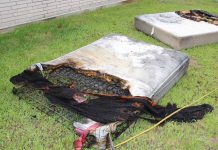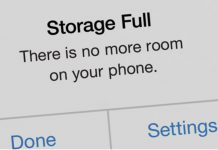The most common question that every property owner has when planning to have a cell tower built on their land is “What’s the most amount of rent I can receive for my property?”.
While Cell Towers and property prices both share similar factors that determine price like age, design, offers, etc. cell tower lease rates are far more complex.
The involvement of legal, engineering and technological issues along with the company’s cell-site evaluation is done to find out how much contribution your cell tower has to the wireless carriers network.
A cell tower’s contribution to the wireless carrier network will heavily determine how much rental income you can receive.
Why is a Cell Site required?
Before understanding what determines cell phone tower rental rates, let’s dive into on how and why it’s your property they’ve selected to build a cell site.
It would benefit landowners to gain an all-around perspective on how competitive site selection is. Knowing both sides will give you a better idea of what’s the maximum amount of rent you can push for during negotiations.
Cell Sites are selected based on multiple factors which are:
- There is a necessity to improve Wireless coverage capacity by the radio frequency (RF) engineering department; this is due to the rise of phone users making phone calls and going online. It is critical to identify users who experience poor quality phone calls and slow surfing speeds.
- New homes and venues give more opportunities to build more cell sites.
- The RF department reduces interference by optimizing spectral efficiencies.
- Freeway and Building coverage needs to be improved.
What determines Cell Tower Lease Rates?
Rooftop Sites generally pay more
The kind of cell-site you have is a good indicator of the amount of rent you can receive every month. Rooftop sites generally generate higher amounts of rent than raw land sites as there are fewer costs.
On rooftop sites a wireless carrier does not require the construction of a cell tower to support their antenna facilities, further costs are also saved such as insurance, tower climbers to maintain the tower, FAA lighting, and liabilities.
Raw Land sites
The construction of cell sites usually occurs on land which is owned and leased by property owners. A cell site will consist of the installation of a cell tower, electronic cabinets, power and telco cabinets which are surrounded by a fence only to allow wireless employees.
Cell sites on raw land sites will generally make less monthly income because of two factors.
Their locations tend to be just outside a town providing fewer residents and vehicles in comparison to a larger condensed populated city.
The second factor is the cost of construction and maintenance of the tower, which is substantially more than a rooftop site.
Condensed populations increase coverage demand
High population concentration is critical in determining how much rent you will receive and this will depend on the proximity of your cell site to the targeted population.
Wireless carriers will prefer cell sites near primary metropolitan areas as these towers are capable of handling the substantial amount of calls and internet traffic these areas produce. Maintenance costs are also lower as there are more cell sites in these prime locations.
Cell site owners can demand higher rental incomes as their land is seen as an excellent strategic location to cater to the highest amount of users possible, i.e. at an upper area that overlooks most of the city.
Other concentrated areas that always require much-needed coverage are shopping malls, airports, stadiums, and large venues as many people are confined to one space.
These areas naturally have people use enormous amounts of data consumption and a high volume of phone calls. Cell sites that are closest to these condensed locations will be able to negotiate higher prices of rent.
The components of a Cell Tower Agreement
A landlord’s decision to lease property for a cell tower is not a small one, and it is essential to know what a cell tower agreement entails.
Lease Duration
These contracts are generally long term starting with five years and having a maximum of 30 years. You can choose to begin with a 5-year term and renew the cell tower lease for another five-year extension once it has expired or agree to 30 years right from the very start.
Explanation of Rent
The majority of landlords will want to know how much rent they will receive per month; however, as mentioned previously, it’s critical to understand all the factors that will determine the cell site’s value.
Even though your cell site and a competitor are located in the same area, it doesn’t mean your monthly rent will be the same due to many variables.
Fees for Co-location and subleasing
Once a wireless carrier leases your land, they may allow another carrier to pay a co-location fee to occupy part of that land. Understanding this enables you to remove subleasing from being part of the contract, as this can have ramifications over a long period.
Early Termination Clause
Your Cell tower may no longer be necessary for the future due to the ever-changing industry so take caution when agreeing to long term periods.
There are multiple reasons why a wireless carrier will want to terminate the agreement. These issues include technological advances requiring equipment modifications, mergers with another company, interference compromising the cell towers’ effectiveness and many more.
An early termination clause is imperative to protect your rights as a landlord and to prevent a wireless carrier from terminating the contract at their convenience.







